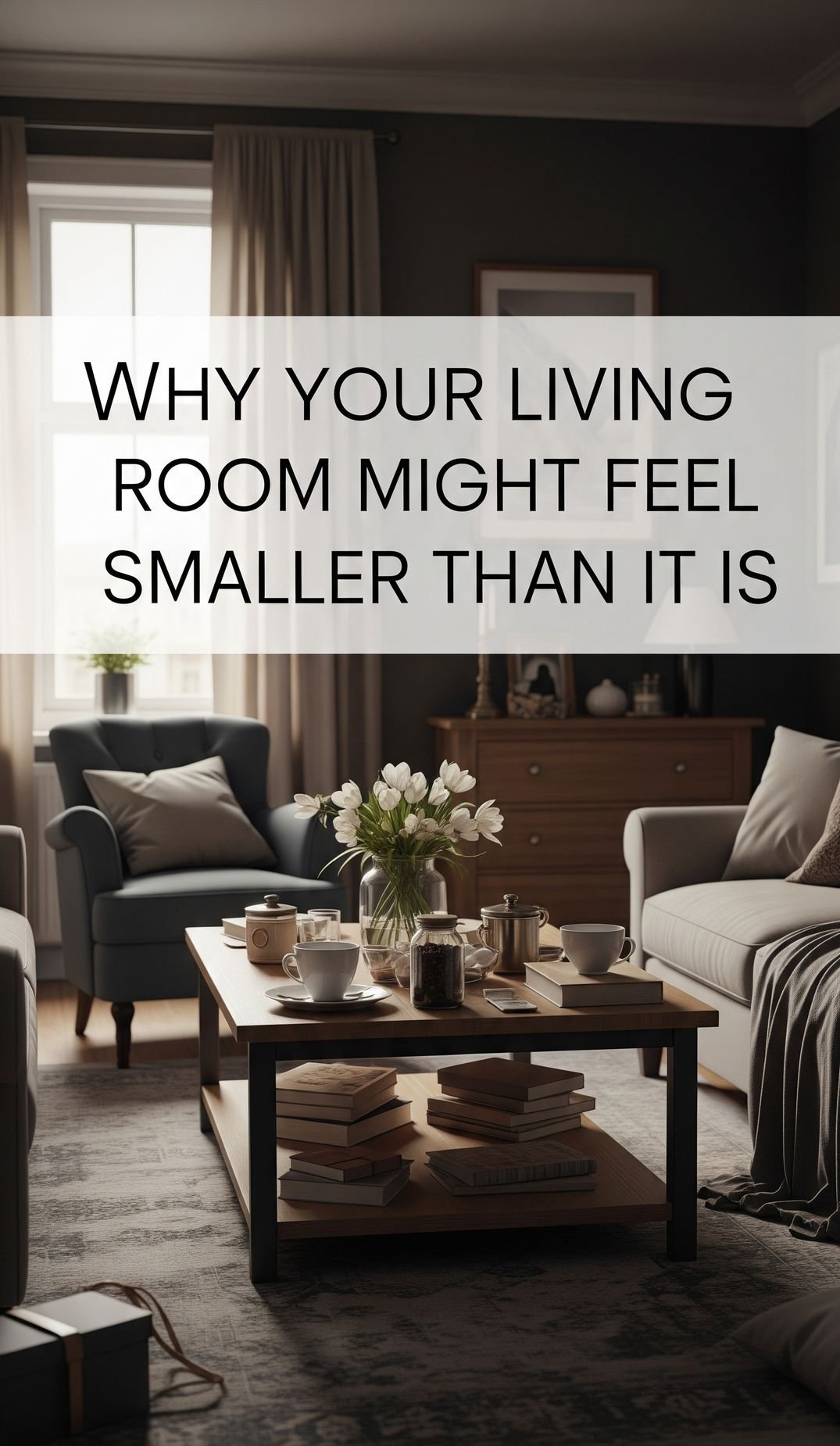Why Your Living Room Might Feel Smaller Than It Is
Many factors contribute to the perception of space within a room. Even if your living room has decent square footage, certain design choices and organizational habits can make it feel cramped and smaller than its actual dimensions.
Understanding these elements is the first step towards creating a more spacious and comfortable environment.
This article delves into the key reasons why your living room might feel smaller than it is, offering practical insights and solutions to maximize the feeling of openness.
Cluttered Surfaces and Excess Decor
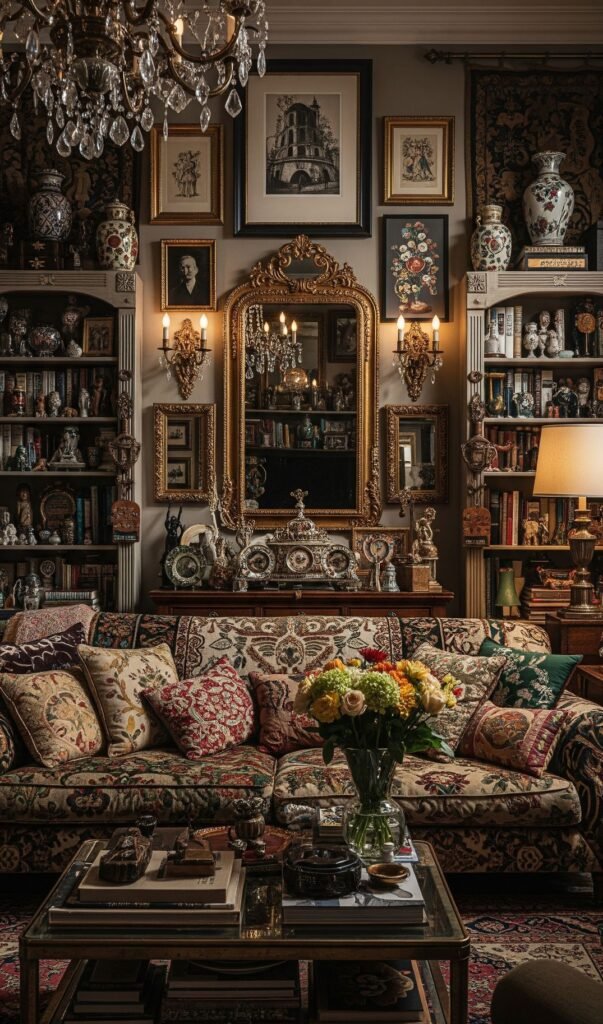
The accumulation of items on various surfaces is a primary culprit in making a living room feel smaller.
Coffee tables overflowing with magazines, remote controls, and decorative trinkets visually weigh down the space.
Similarly, shelves packed with books, photographs, and knick-knacks without a sense of order can create a feeling of visual busyness and reduce the perceived size of the room.
How clutter impacts the feeling of space
- Visual Noise: A multitude of small, disparate objects creates visual noise, making the eye jump around and preventing it from resting on open areas. This visual clutter can make the room feel chaotic and smaller than it is.
- Reduced Surface Area: When surfaces are covered with items, the visible surface area diminishes. Larger, clear surfaces create a sense of openness and airiness.
- Impeded Movement: Excessive clutter can physically obstruct pathways and make it difficult to move freely around the room, further contributing to a feeling of confinement.
Solutions
- Declutter Regularly: Implement a routine for decluttering. Regularly go through items on surfaces and in storage, removing anything that is no longer needed or used.
- Prioritize and Curate: Be selective about the decorative items you display. Choose a few impactful pieces rather than numerous small ones. Rotate your decor periodically to keep the space feeling fresh and uncluttered.
- Utilize Smart Storage: Invest in furniture with built-in storage, such as coffee tables with drawers or ottomans with hidden compartments. Use trays and baskets to contain smaller items and create a sense of order.
- Vertical Storage: If you have many items to store, consider utilizing vertical space with tall, narrow shelving units instead of wide, bulky ones. Ensure there is still some visual breathing room on the shelves.
Oversized and Bulky Furniture
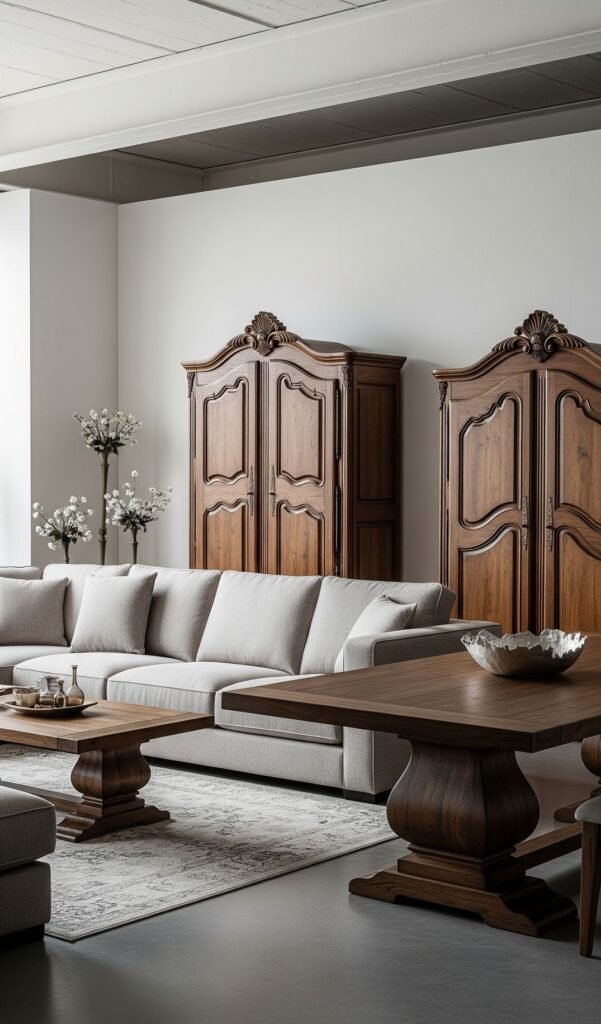
While comfortable seating is essential, choosing furniture that is too large or bulky for the size of your living room can significantly diminish the feeling of space.
Overstuffed sofas, oversized armchairs, and deep coffee tables can visually and physically dominate a smaller room, leaving little room for movement and creating a cramped atmosphere.
How oversized furniture impacts the feeling of space
- Scalability Issues: Large furniture pieces overwhelm a small room, making it feel even smaller by comparison. There is a lack of visual balance between the furniture and the overall dimensions of the space.
- Limited Floor Space: Bulky furniture occupies a significant portion of the floor area, reducing the visible expanse of the floor and making the room feel crowded.
- Restricted Traffic Flow: Oversized pieces can obstruct natural pathways, making it difficult to navigate the room comfortably. This physical constraint contributes to the feeling of smallness.
Solutions
- Measure Carefully: Before purchasing any furniture, meticulously measure your living room dimensions, including the height, width, and depth of the space. Use painter’s tape to mark out the footprint of potential furniture pieces on the floor to visualize their scale.
- Choose Properly Scaled Furniture: Opt for furniture that is proportionate to the size of your living room. Consider sofas and armchairs with slimmer profiles, higher legs, and shallower depths.
- Multifunctional Furniture: Incorporate furniture that serves multiple purposes, such as a storage ottoman or a coffee table with lift-up storage. This can reduce the number of individual pieces needed and free up floor space.
- Consider Fewer, Larger Pieces (Carefully): In some cases, a few well-chosen, appropriately scaled larger pieces can be better than many smaller, disparate ones. The key is to ensure they are not overwhelming the room.
Poor Lighting and Dark Colors
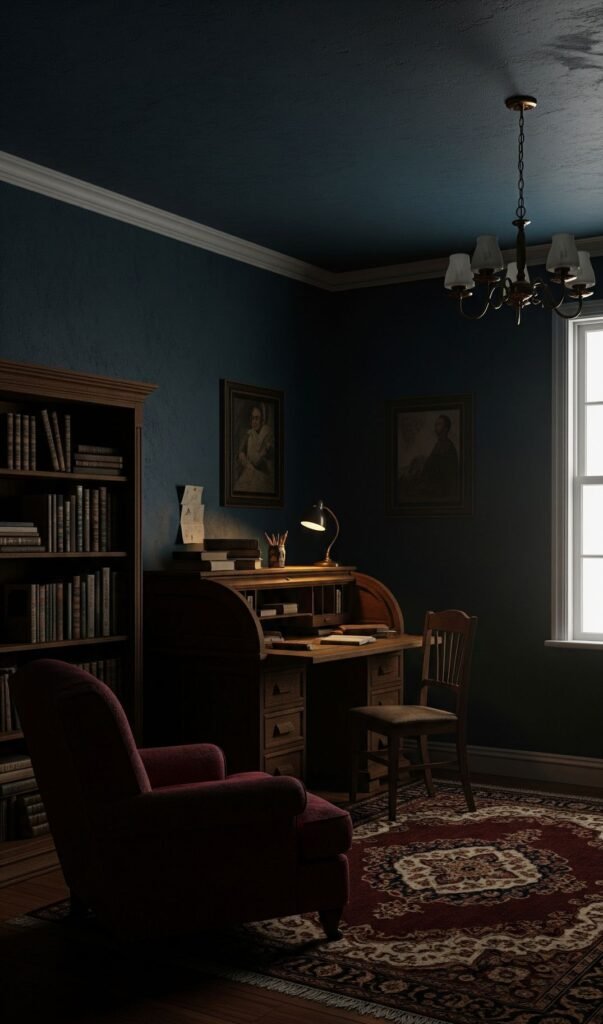
The way a room is lit and the colors used on the walls and furniture have a significant impact on the perception of space.
Poor lighting can make a room feel gloomy and confined, while dark colors can absorb light and visually shrink the boundaries of the room.
How lighting and color impact the feeling of space
- Natural Light Limitation: Rooms with small windows, obstructed views, or heavy window treatments that block natural light tend to feel darker and smaller. Natural light expands a space and makes it feel more open.
- Inadequate Artificial Lighting: Relying solely on a single overhead light fixture can create harsh shadows and leave corners of the room feeling dark and undefined. A lack of layered lighting reduces the sense of depth and spaciousness.
- Light Absorption by Dark Colors: Dark wall colors, heavy dark furniture, and dark flooring absorb light, making the room feel visually smaller and more enclosed. Light colors reflect light, making surfaces recede and the room feel larger.
Solutions
- Maximize Natural Light: Keep window treatments light and minimal to allow as much natural light as possible to enter the room. Consider sheer curtains or blinds that can be adjusted to control light and privacy without completely blocking the view.
- Layer Artificial Lighting: Incorporate a variety of light sources, including overhead lighting, floor lamps, table lamps, and accent lighting. This creates a more even distribution of light, eliminates harsh shadows, and adds depth to the room.
- Choose Light and Bright Colors: Opt for light and neutral paint colors for the walls. These colors reflect light and create a sense of openness. Use darker colors as accents in smaller doses.
- Light-Colored Furniture and Flooring: Consider light-colored upholstery for sofas and chairs and lighter flooring options. These choices will contribute to a brighter and more spacious feel.
- Mirrors to Reflect Light: Strategically placed mirrors can reflect both natural and artificial light, instantly making a room feel brighter and larger. Position mirrors opposite windows or light sources to maximize their effect.
Disconnected Furniture Arrangement
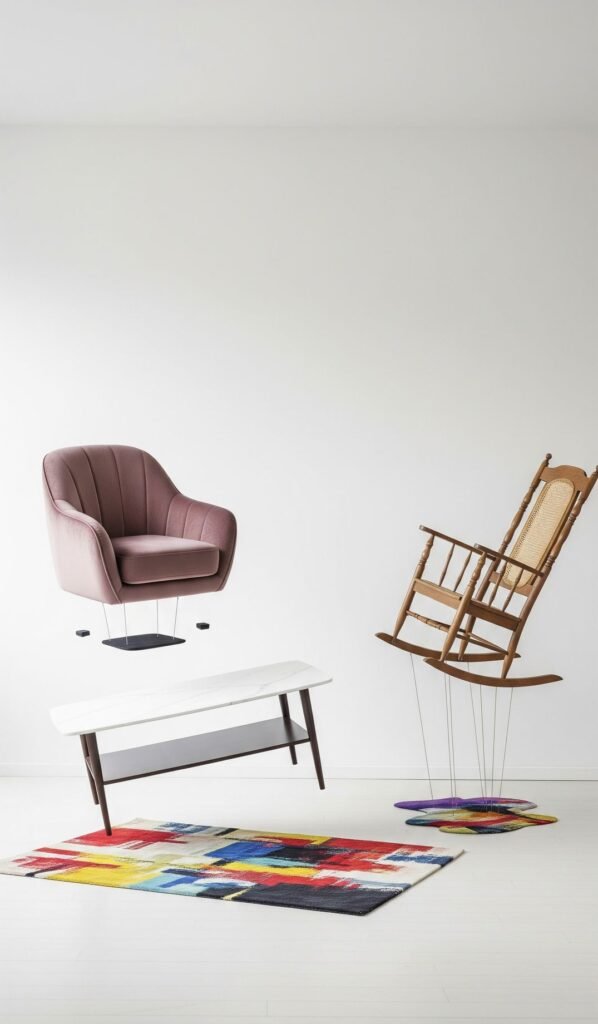
The way furniture is arranged within a living room can significantly impact the flow and the perceived size of the space.
Furniture pushed against the walls might seem like a way to maximize floor space, but it can actually make the room feel smaller and less inviting.
How furniture arrangement impacts the feeling of space
- Lost Circulation Space: Pushing all furniture against the walls creates a large empty space in the center of the room, which can feel awkward and underutilized. It also restricts natural flow and conversation areas.
- Visual Boxiness: When furniture lines the perimeter of the room, it emphasizes the boundaries of the space, making it feel more like a box and reducing the sense of depth.
- Lack of Defined Zones: A disconnected furniture arrangement can make it difficult to establish distinct zones for different activities, such as conversation or relaxation, leading to a feeling of disorganization.
Solutions
- Create Conversation Areas: Arrange seating in a way that encourages conversation. Angling chairs towards the sofa or placing them opposite each other creates a more intimate and functional space.
- Float Furniture: Consider pulling furniture away from the walls, even if it’s just a few inches. This creates a sense of depth and makes the room feel less confined.
- Define Zones with Rugs: Use area rugs to visually define different zones within the living room, such as a seating area or a reading nook. This can help to break up the space and create a sense of organization.
- Consider Traffic Flow: Ensure that there are clear and unobstructed pathways throughout the room. Avoid placing furniture in a way that blocks doorways or walkways.
Ignoring Vertical Space
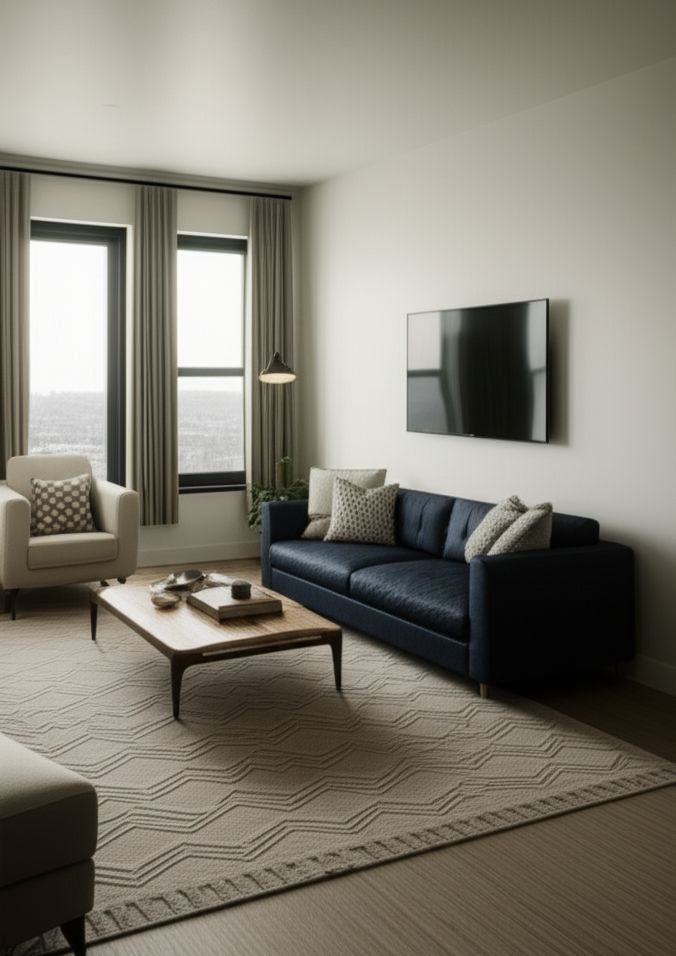
Many people focus primarily on the horizontal space in their living rooms and neglect the potential of vertical space. Failing to utilize the height of the room can make it feel shorter and less expansive.
How ignoring vertical space impacts the feeling of space
- Unutilized Potential: Walls offer a significant amount of space that can be used for storage, decoration, and creating a sense of height. When this space is left bare, the room can feel less finished and smaller.
- Low Visual Focus: Rooms with all the visual interest concentrated at a low level can feel grounded and less airy. Drawing the eye upwards can create a feeling of height and spaciousness.
Solutions
- Tall Shelving Units: Install tall, narrow shelving units to provide storage and display space while drawing the eye upwards. Choose open shelving to maintain a sense of airiness.
- Vertical Wall Decor: Hang artwork, mirrors, or tapestries vertically to elongate the walls and create a feeling of height. Consider a gallery wall that extends upwards.
- Floor-to-Ceiling Curtains: Hang curtain rods close to the ceiling and allow curtains to drape to the floor. This creates a vertical line that makes the ceiling appear higher and the room feel more spacious.
- Tall Plants: Incorporate tall, slender plants to add height and visual interest to the room.
Lack of Visual Flow
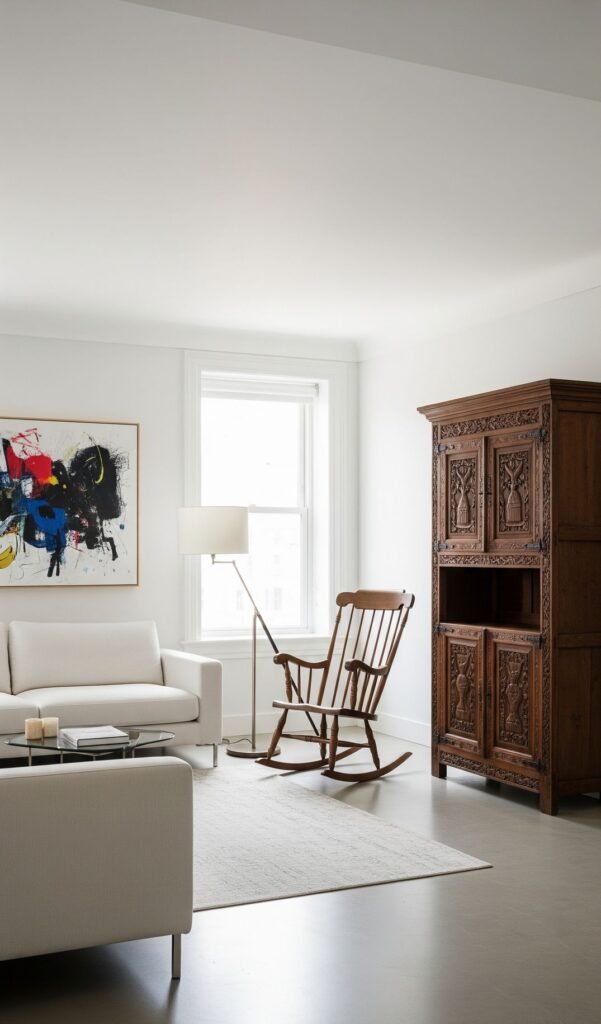
A lack of visual flow can make a living room feel disjointed and smaller than it is. When the eye is constantly interrupted by contrasting elements or abrupt changes in style, the sense of spaciousness is diminished.
How lack of visual flow impacts the feeling of space
- Fragmented Perception: A room with too many different styles, patterns, or colors can feel visually chaotic and fragmented, preventing the eye from moving smoothly through the space.
- Emphasis on Boundaries: Strong contrasts in color or texture can emphasize the boundaries of the room, making it feel more enclosed.
Solutions
- Create a Cohesive Color Palette: Choose a limited color palette with a few core colors and complementary accent colors. This creates a sense of harmony and allows the eye to move seamlessly through the room.
- Maintain Consistent Style: Stick to a consistent design style throughout the living room. Mixing too many disparate styles can create a cluttered and disorganized feel.
- Use Consistent Flooring: If possible, use the same flooring throughout the main living areas of your home. This creates a visual connection between rooms and makes the overall space feel larger.
- Coordinate Window Treatments: Choose window treatments in similar styles and colors for a unified look.
Conclusion
By addressing these factors – from decluttering and choosing appropriately scaled furniture to optimizing lighting and creating a better flow – you can significantly enhance the feeling of spaciousness in your living room, making it a more comfortable and inviting area to relax and socialize.
Remember that even small changes can make a big difference in how you perceive the size and openness of your living space.
